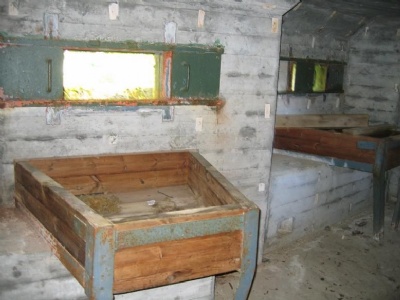Sjöänds - Fort 118
Sweden stayed neutral during the Second World War. But in the wake of Germany’s invasion of Norway, Sweden could not rule out an german attack and along the western border defense positions was built and strengthened and manned by military personal. If the Germans had attacked Sweden, it is likely that the attack had come along the border in the counties of Värmland and Dalsland. Therefore, a number of defensive positions were built in these areas to face a possible German attack. Such a defence position, or redoubt, was built in the Glass Forest outside the town Årjäng in western Värmland. The redoubt was built between 1940 and 1943 and its official name was Fort 118. From 1943, a German military attack on Sweden was considered non-existent and therefore the construction was halted. Although the war never came, the redoubt was used until 1969 for military exercises.
Current status: Preserved (2006).
Location: 59° 28.4' N 12° 16.9' E
Get there: Car.
Follow up in books: Gilmour, John: Sweden, the Swastika and Stalin - The Swedish Experience in the Second World War (2011).




The redoubt is Sweden’s best preserved and consists of foxholes, rifle nestas and bunkers and is beautifully located at Holmtjärn deep in the Glass forests’ nature reserve. That Sweden was neutral is perhaps not entirely true. Between 1940 and 1943, Sweden allowed the Germans to use the Swedish railway network for the transport of soldiers on leave and for injured soldiers. This was called the permittent traffic. Shortly after the German attack on the Soviet Union in June 1941, Sweden approved a joint request from Germany and Finland to transport the fully military-equipped Engelbrecht division through Sweden from Norway to Finland. This was called transit traffic. When the tide of the war turned against Germany in 1943, Sweden dared to terminate the perennial agreement with the Germans. The policy of concessions to the Germans was thus definitely over.